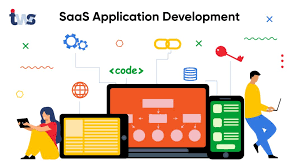Driving Innovation Through Developed Technologies
The Significance of Being Developed
Development is a continuous process that plays a crucial role in personal growth, professional success, and societal advancement. Whether it’s personal development, economic development, or technological development, the act of progressing and improving is fundamental to achieving goals and reaching new heights.
Personal Development
Personal development encompasses activities that enhance self-awareness, skills, talents, and potential. It involves setting goals, acquiring new knowledge, improving relationships, and fostering a positive mindset. Through personal development efforts, individuals can boost their confidence, resilience, and overall well-being.
Economic Development
Economic development refers to the sustained increase in economic activities that improve the well-being of a society. It involves creating job opportunities, increasing productivity, promoting innovation, and reducing poverty. A developed economy provides its citizens with access to education, healthcare, infrastructure, and other essential services.
Technological Development
Technological development drives progress in various fields by introducing new tools, systems, and processes. It leads to advancements in communication, transportation, healthcare, energy production, and more. Embracing technological developments enables societies to enhance efficiency, competitiveness, and quality of life.
In conclusion, being developed is not just about achieving a certain status; it’s about embracing growth and change as integral parts of life. By continuously pursuing development on personal, economic, and technological fronts, individuals and societies can create a brighter future filled with opportunities and prosperity.
9 Essential Tips for Personal and Professional Development
- Set clear goals and objectives.
- Stay organized and prioritize tasks.
- Continuously seek opportunities for learning and growth.
- Communicate effectively with others.
- Take care of your physical and mental well-being.
- Build strong relationships with colleagues and mentors.
- Be adaptable and open to change.
- Celebrate successes, no matter how small.
- Never stop challenging yourself.
Set clear goals and objectives.
Setting clear goals and objectives is a fundamental tip for personal and professional development. By defining specific targets and outlining a roadmap to achieve them, individuals can stay focused, motivated, and organized in their pursuit of growth. Clear goals provide direction, clarity, and a sense of purpose, guiding individuals through challenges and setbacks. Whether aiming for personal milestones or professional achievements, having well-defined goals helps individuals measure progress, track success, and ultimately reach their full potential.
Stay organized and prioritize tasks.
To stay on track with personal development goals, it is essential to stay organized and prioritize tasks effectively. By maintaining a structured approach to daily activities, individuals can better focus on important tasks, allocate time efficiently, and avoid feeling overwhelmed. Prioritizing tasks based on their significance and deadlines ensures that crucial objectives are addressed first, leading to a more productive and successful developmental journey.
Continuously seek opportunities for learning and growth.
Continuously seeking opportunities for learning and growth is a key aspect of personal and professional development. By staying curious, open-minded, and proactive in acquiring new knowledge and skills, individuals can expand their capabilities, adapt to change, and unlock their full potential. Embracing a mindset of lifelong learning not only enriches one’s personal life but also enhances career prospects and fosters innovation. It is through this commitment to continuous improvement that individuals can navigate challenges, seize opportunities, and ultimately achieve success in their endeavors.
Communicate effectively with others.
Effective communication is a key aspect of personal and professional development. By communicating clearly and openly with others, individuals can build strong relationships, resolve conflicts, and collaborate successfully. Listening actively, expressing thoughts and ideas articulately, and being receptive to feedback are all essential components of effective communication. When individuals prioritize clear and respectful communication in their interactions with others, they contribute to a positive environment conducive to growth and development.
Take care of your physical and mental well-being.
Taking care of your physical and mental well-being is essential for overall development and success. Prioritizing self-care practices such as regular exercise, healthy eating, and sufficient rest can improve your physical health, boost energy levels, and enhance productivity. Additionally, nurturing your mental well-being through activities like meditation, mindfulness, and seeking support when needed can help reduce stress, increase resilience, and promote a positive mindset. By investing in your holistic well-being, you set a strong foundation for personal growth and fulfillment in all aspects of life.
Build strong relationships with colleagues and mentors.
Building strong relationships with colleagues and mentors is a valuable tip for personal and professional development. Colleagues can offer support, collaboration, and diverse perspectives that help in achieving common goals and fostering a positive work environment. Mentors, on the other hand, provide guidance, wisdom, and insights based on their experiences, which can be instrumental in navigating challenges and unlocking new opportunities for growth. By nurturing these relationships with care and respect, individuals can enhance their skills, expand their networks, and accelerate their development journey towards success.
Be adaptable and open to change.
In the journey of development, it is essential to be adaptable and open to change. Embracing flexibility and a willingness to adjust to new circumstances allows for growth and progress. By being open-minded and receptive to change, individuals can navigate challenges, seize opportunities, and continue evolving towards their goals. Adapting to new situations with a positive attitude not only fosters personal development but also paves the way for innovation and success in various aspects of life.
Celebrate successes, no matter how small.
Celebrating successes, no matter how small, is a powerful way to acknowledge progress and stay motivated on the journey of development. By recognizing and appreciating even the smallest achievements, individuals can boost their confidence, reinforce positive behaviors, and cultivate a mindset focused on growth and improvement. These celebrations serve as reminders of the effort put in and provide encouragement to continue striving for further success in personal, professional, or societal development.
Never stop challenging yourself.
Continuously challenging oneself is a key aspect of personal growth and development. By pushing beyond comfort zones and setting new goals, individuals can unlock their full potential and discover hidden talents. Embracing challenges fosters resilience, adaptability, and a growth mindset, enabling individuals to thrive in the face of adversity. Never stopping to challenge oneself not only leads to self-improvement but also opens up new opportunities for learning and achievement.




